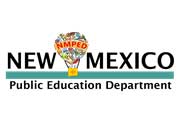Empowering Minds, Transforming Futures
Addressing Literacy Challenges
Join our mission to eradicate literacy barriers and unlock potential for people in Santa Fe.
New Mexico’s Continuous Struggle with Literacy (and Thereby Everything Else)
You may have seen in the newspaper recently that the Annie E. Casey Foundation “Kids Count” report ranked New Mexico as fiftieth in education from 2022, with a whopping 79% of fourth graders without reading proficiency. For those of us who care deeply about our community and the people within it and strive every day to make life better for families, it is disheartening and difficult to see these reports again and again.
We at Literacy Volunteers strongly believe that education starts at home. When adults gain basic literacy skills, they demonstrate those skills to their children daily. They read to their children. They help their children with their homework. They exemplify what a word-rich environment looks like. When parents achieve literacy, they show their children what is possible in life and work.

One piece of good news is that the state’s plans include working towards a “Literacy Institute,” with the State of New Mexico launching a summer reading program for children in kindergarten through eighth grade with the goals of teaching the components of reading, increasing literacy outcomes, measuring progress, and developing students’ confidence.

As Governor Lujan Grisham said last year: “Until every child in New Mexico can read proficiently at their grade level, we must keep deploying every tool at our disposal. I have no doubt that our strategy of bringing students, parents, teachers and higher education institutions up to speed in the science of reading will yield results.”
Please call your representatives and write to the governor with one simple request: The lack of literacy is cyclical and transgenerational. Please do not forget that adults’ increased literacy also must be part of the state’s plans.
In the words of the Foundation, “Our country continues to have significant gaps in educational achievement by race and income among all age groups … Closing these gaps will be key to ensuring the nation’s future workforce can compete on a global scale.”

